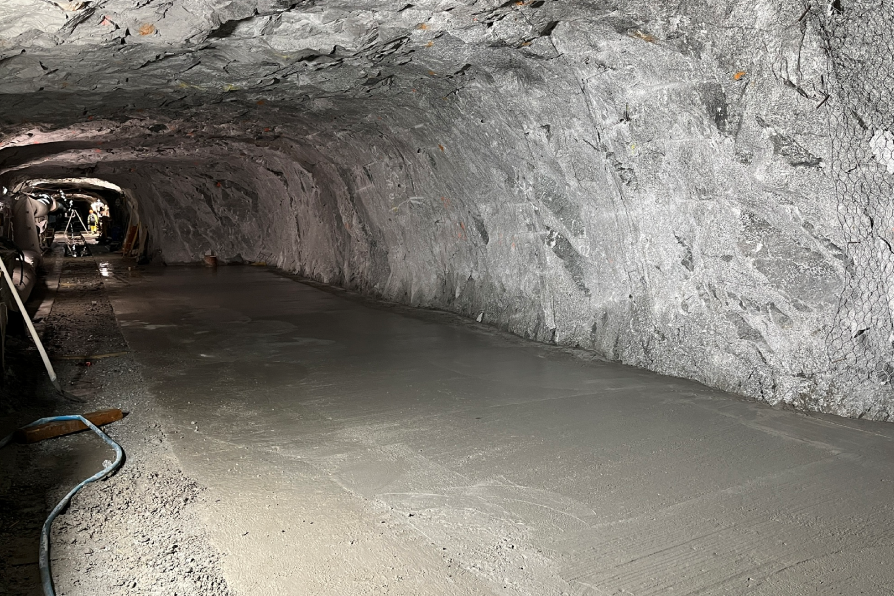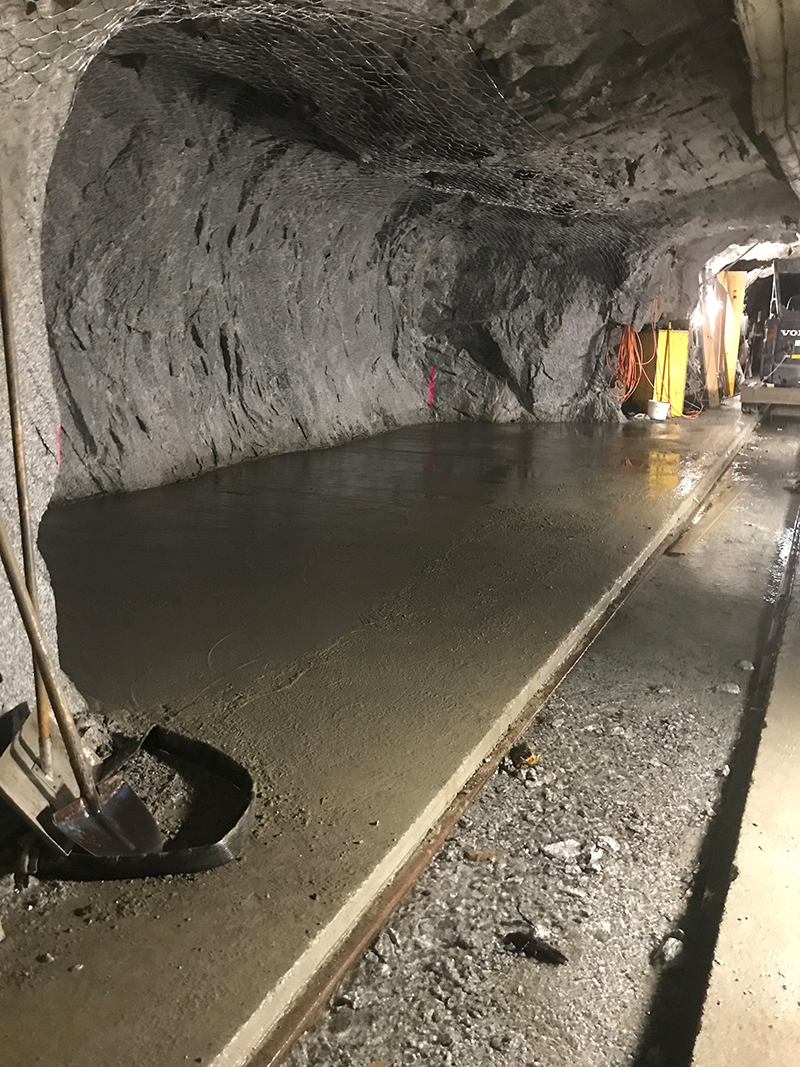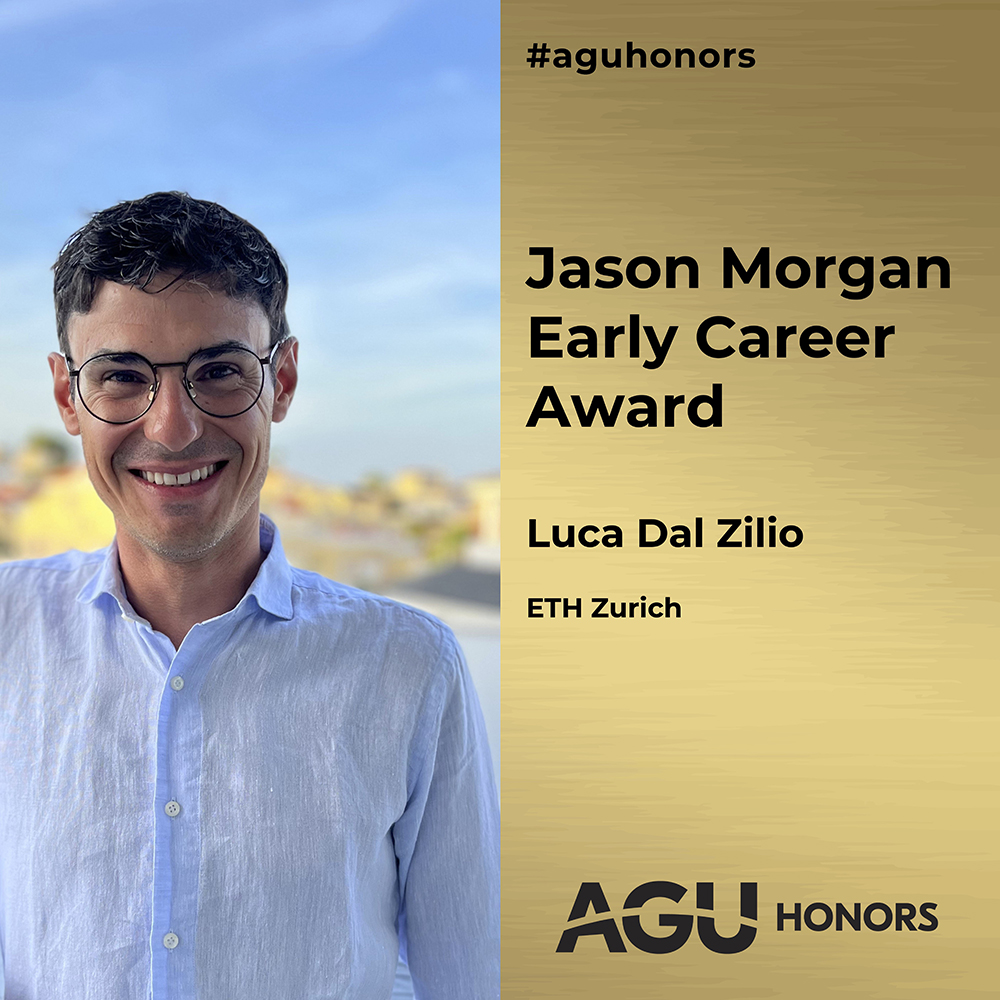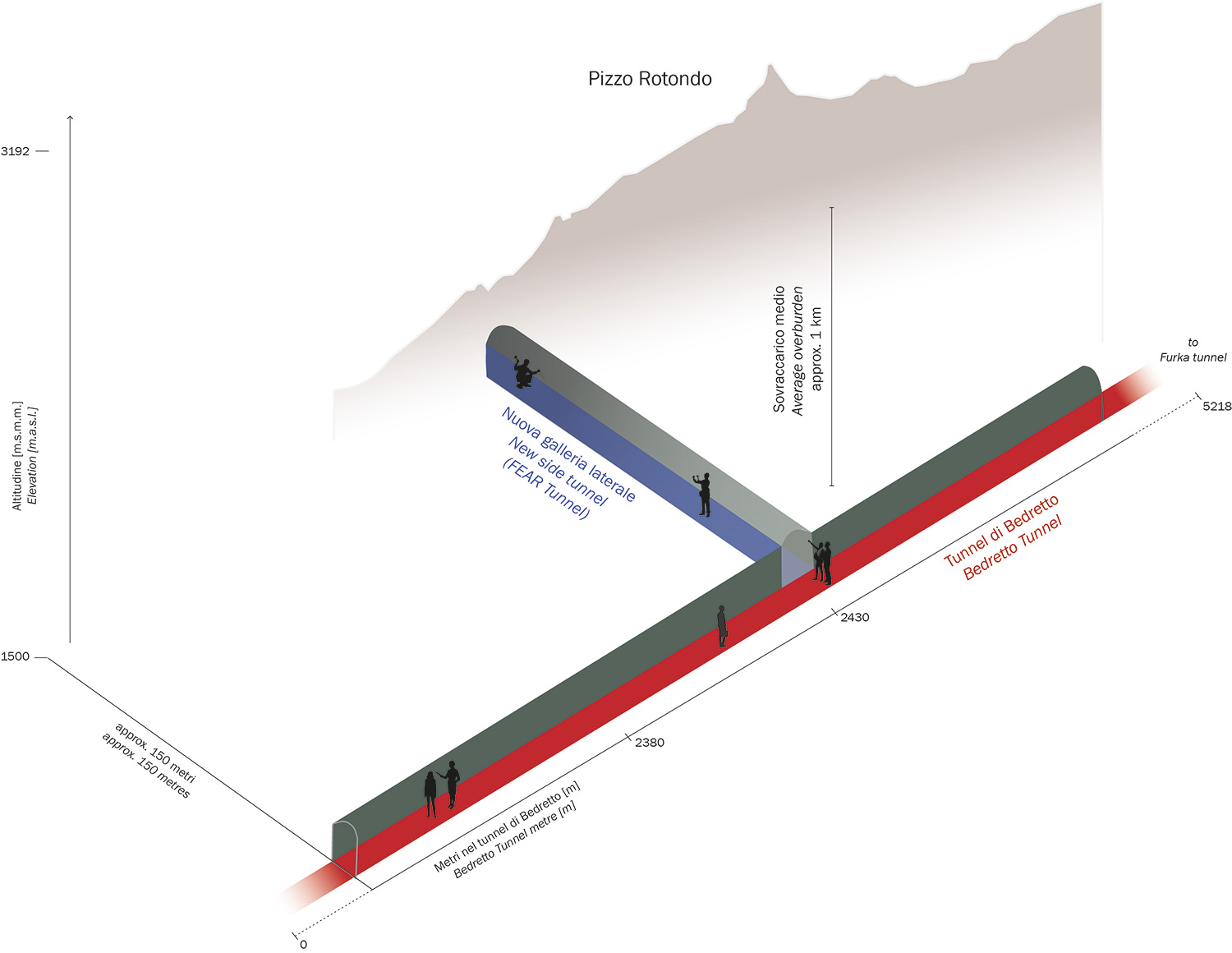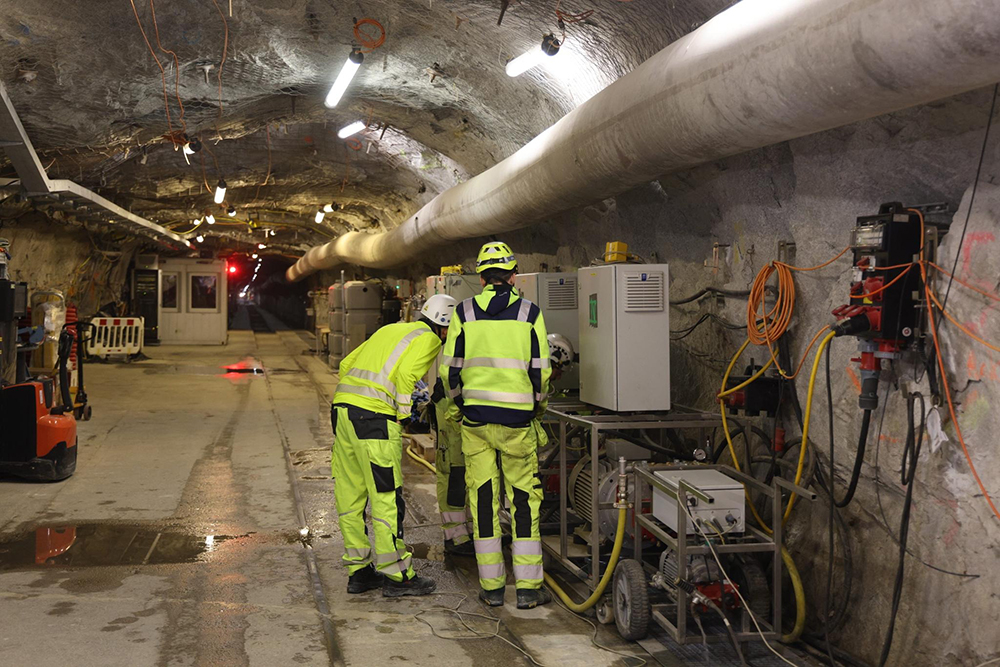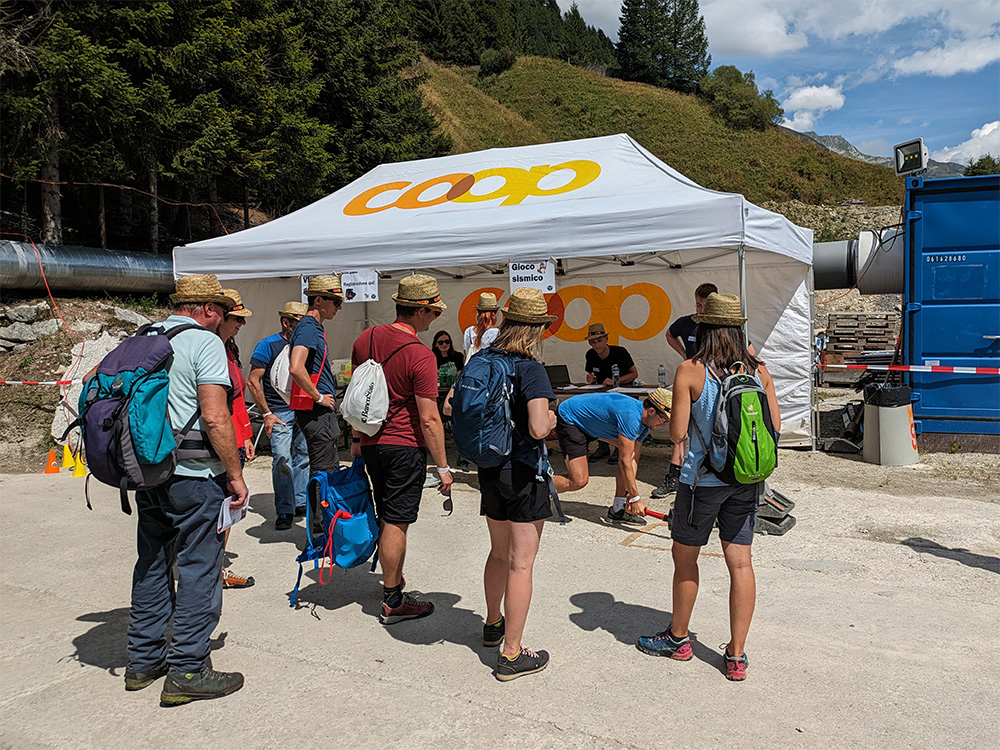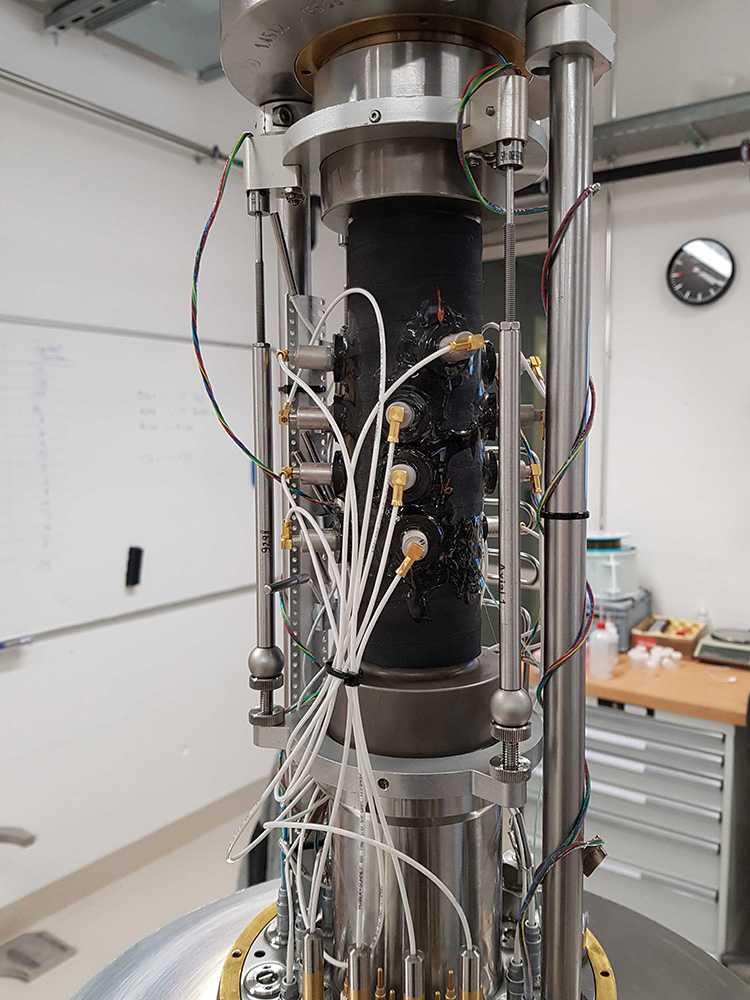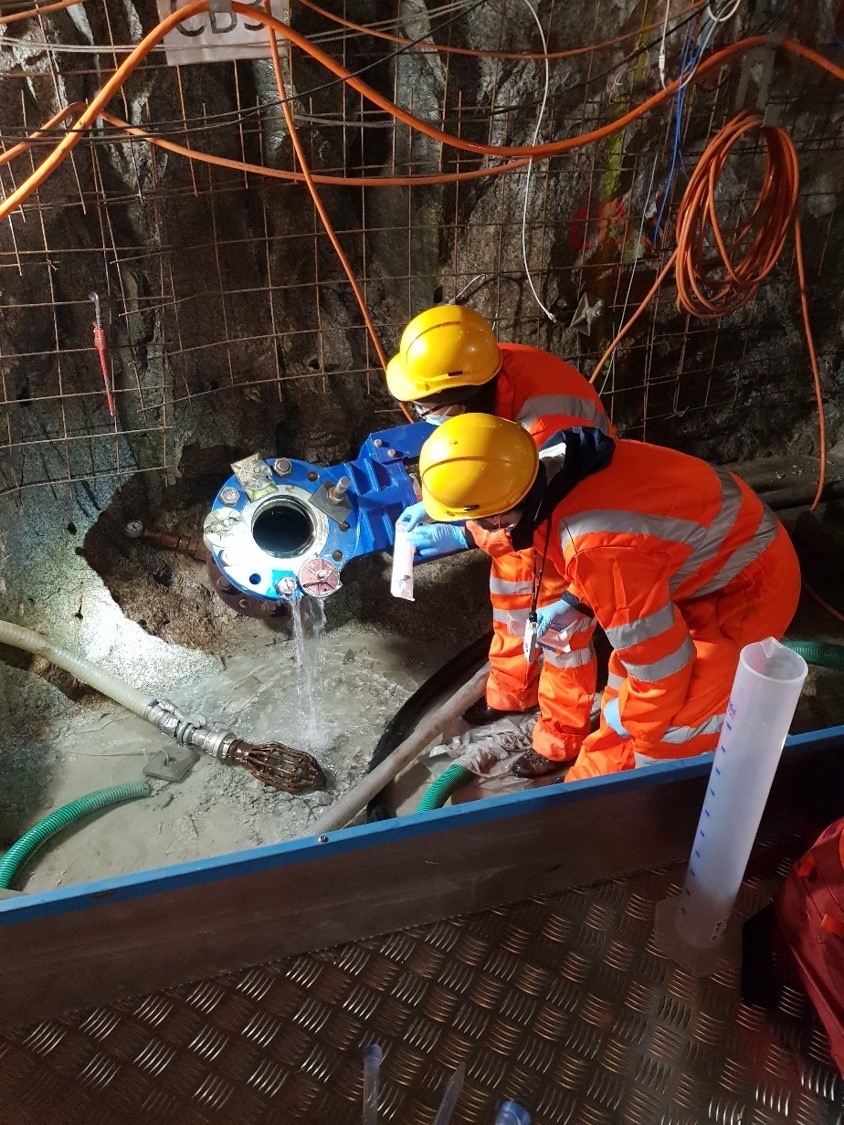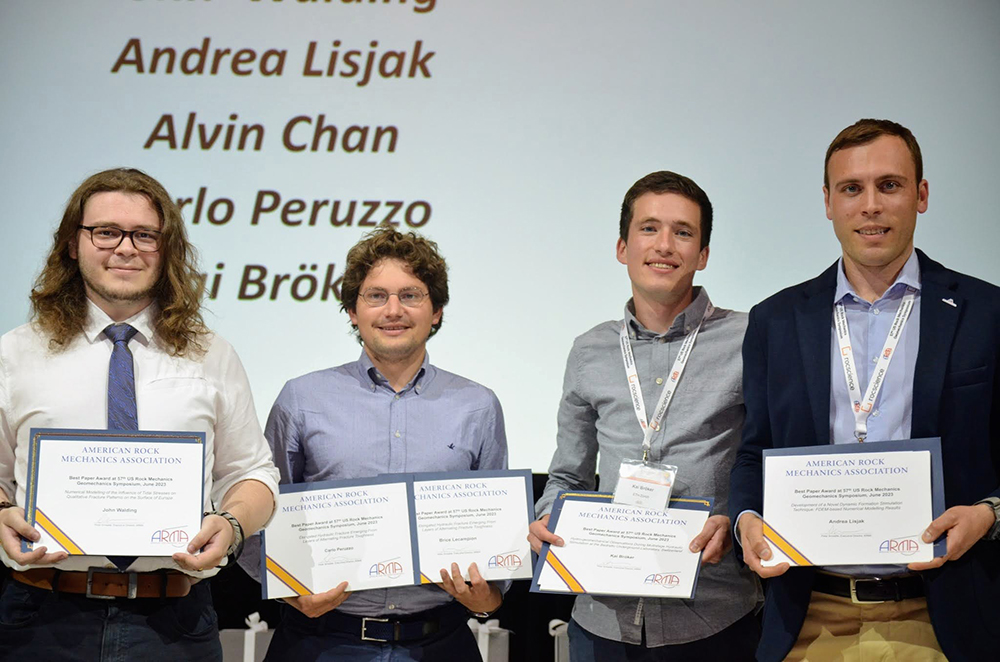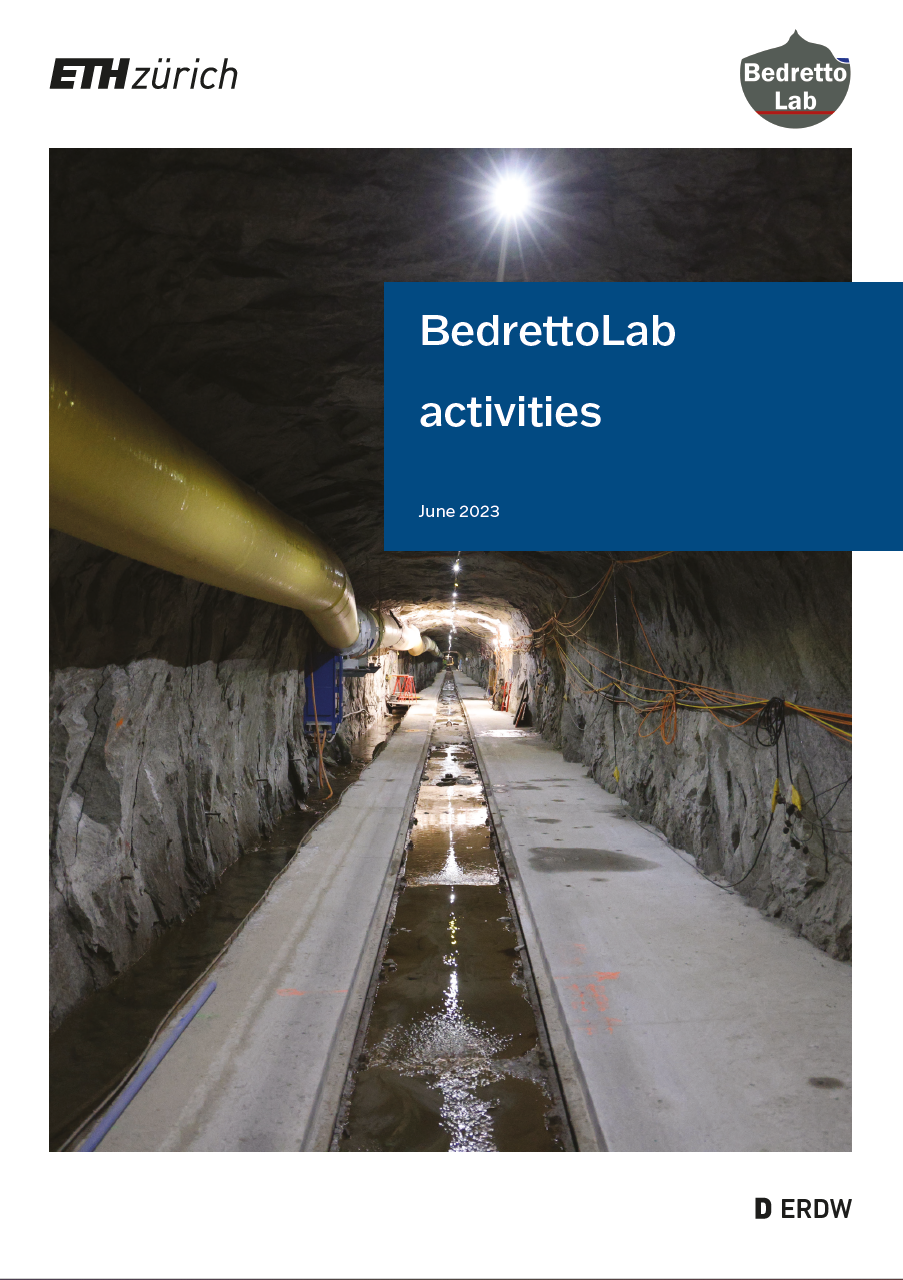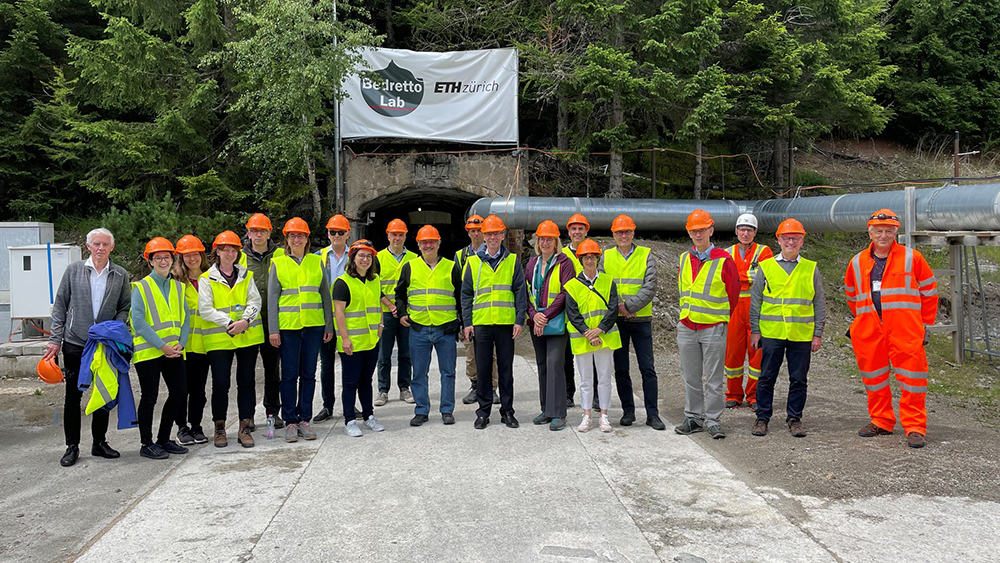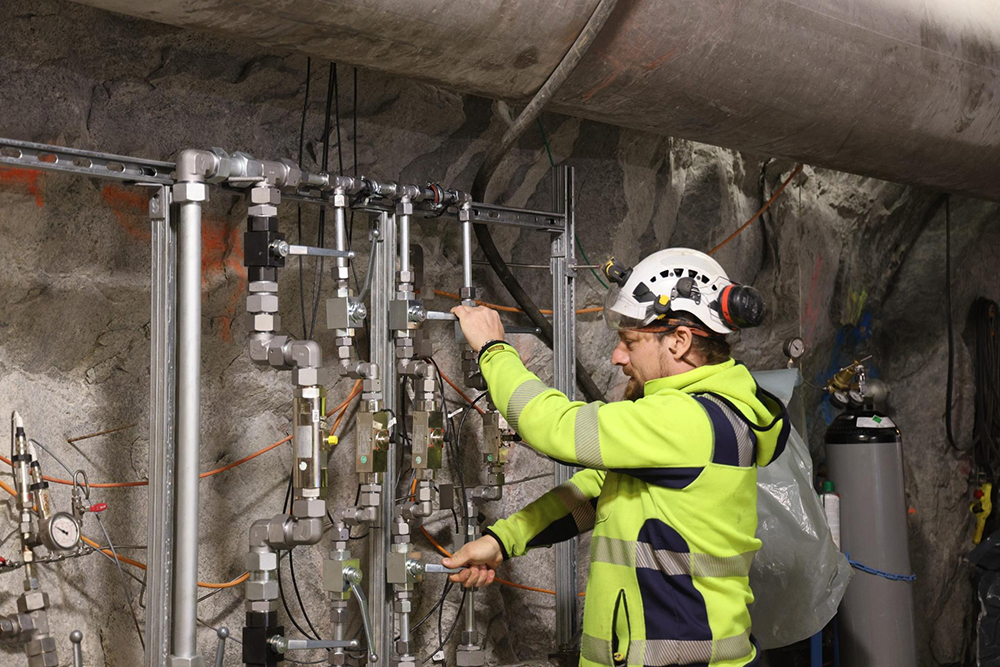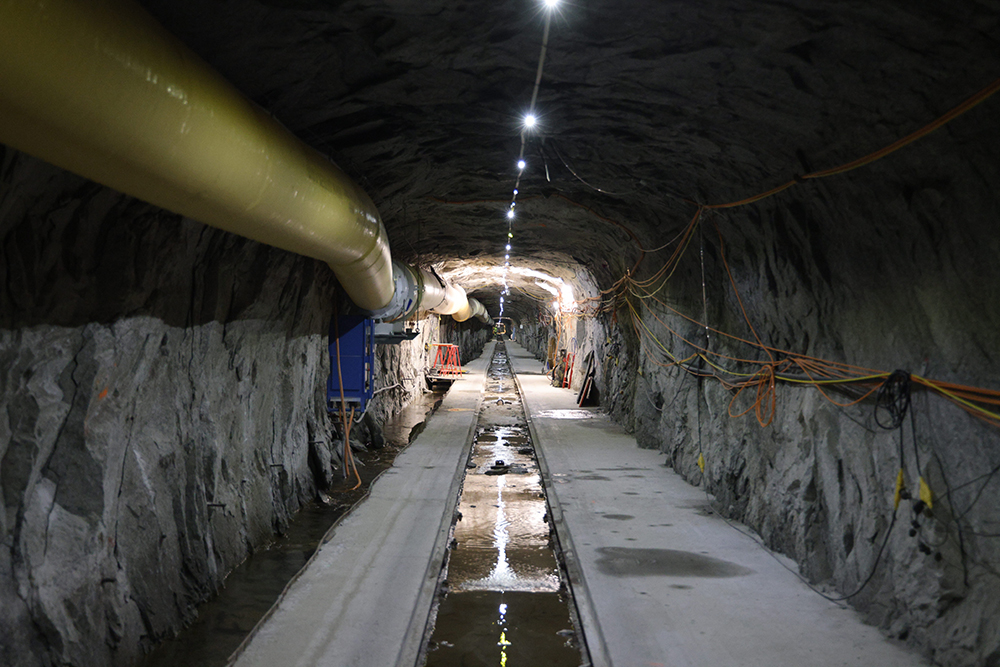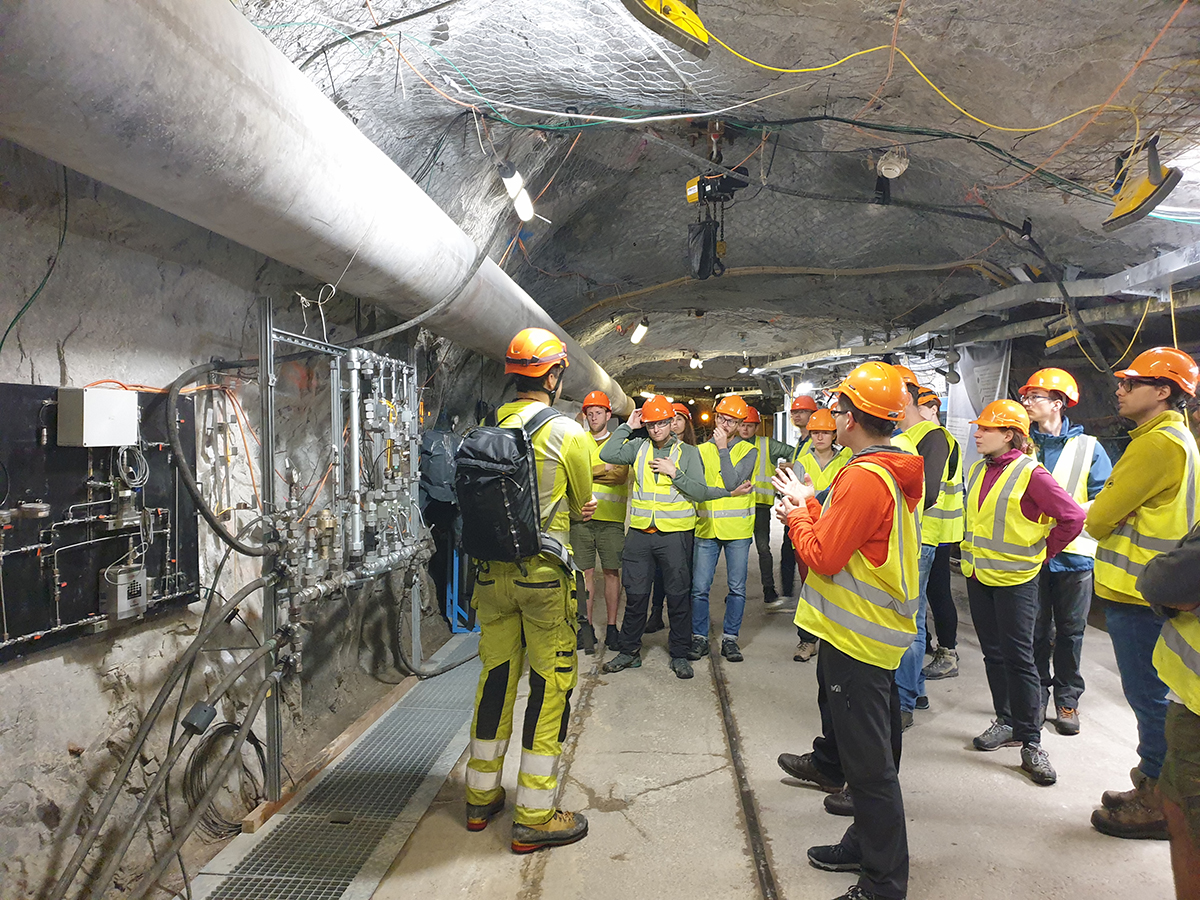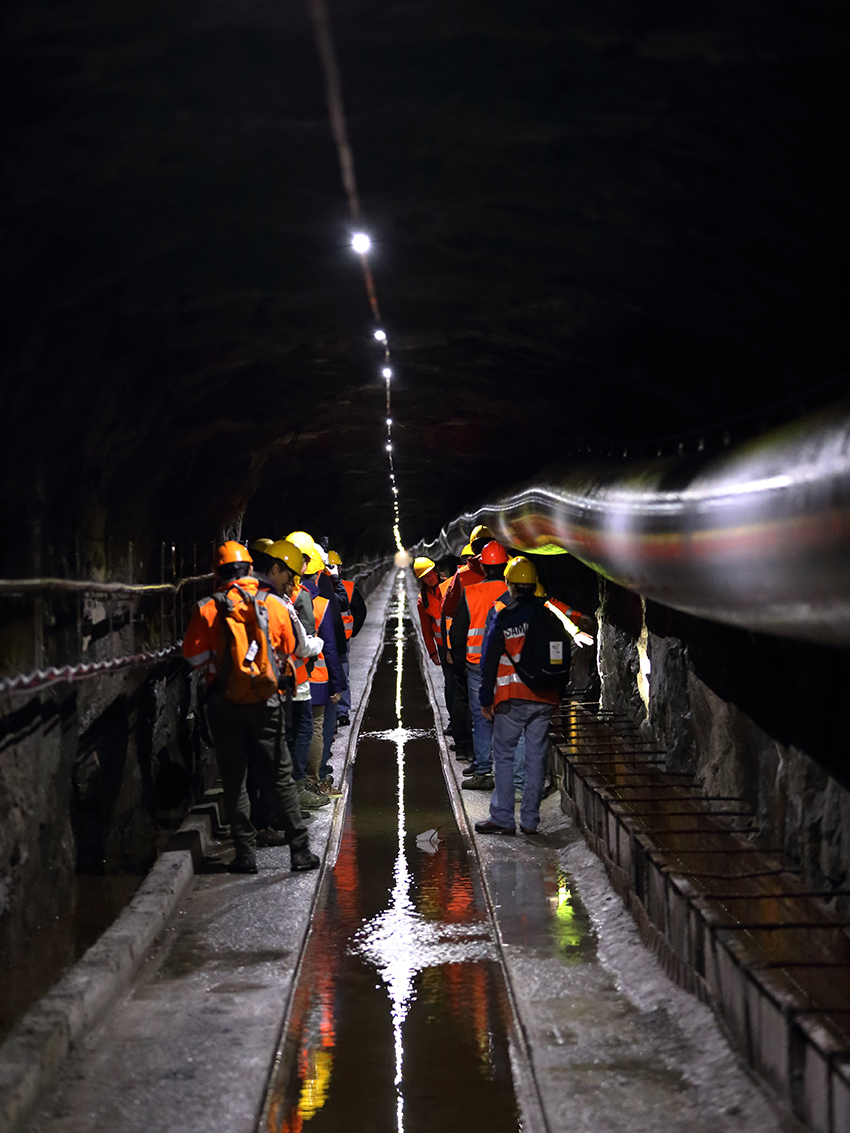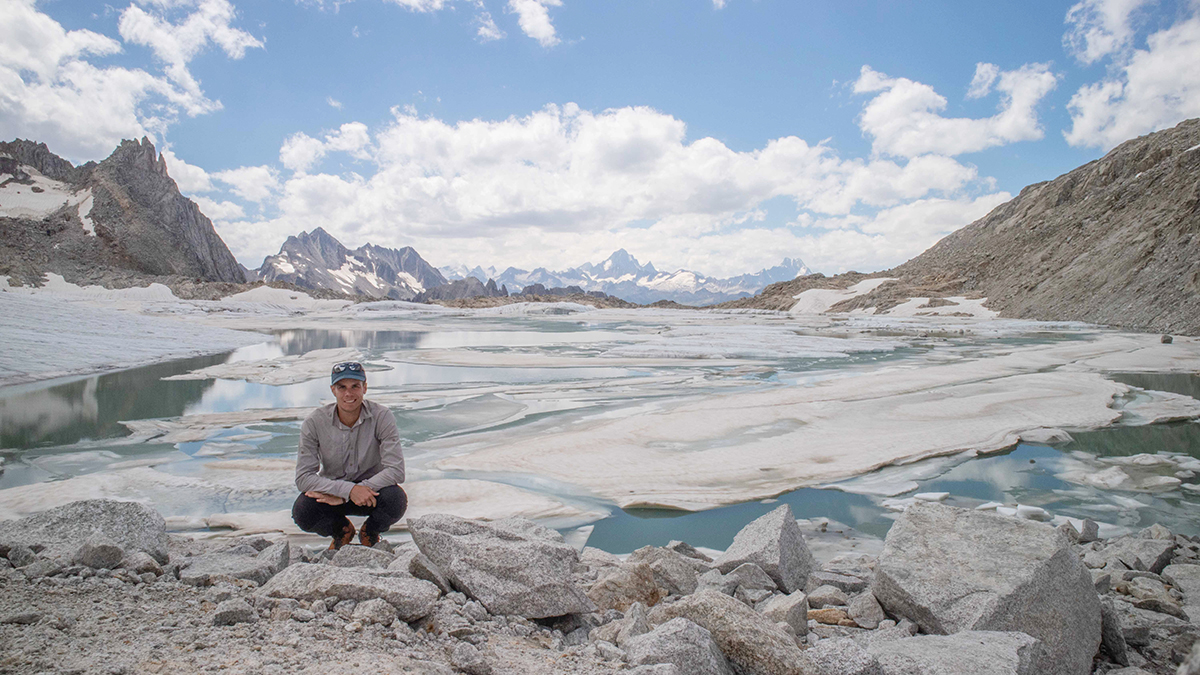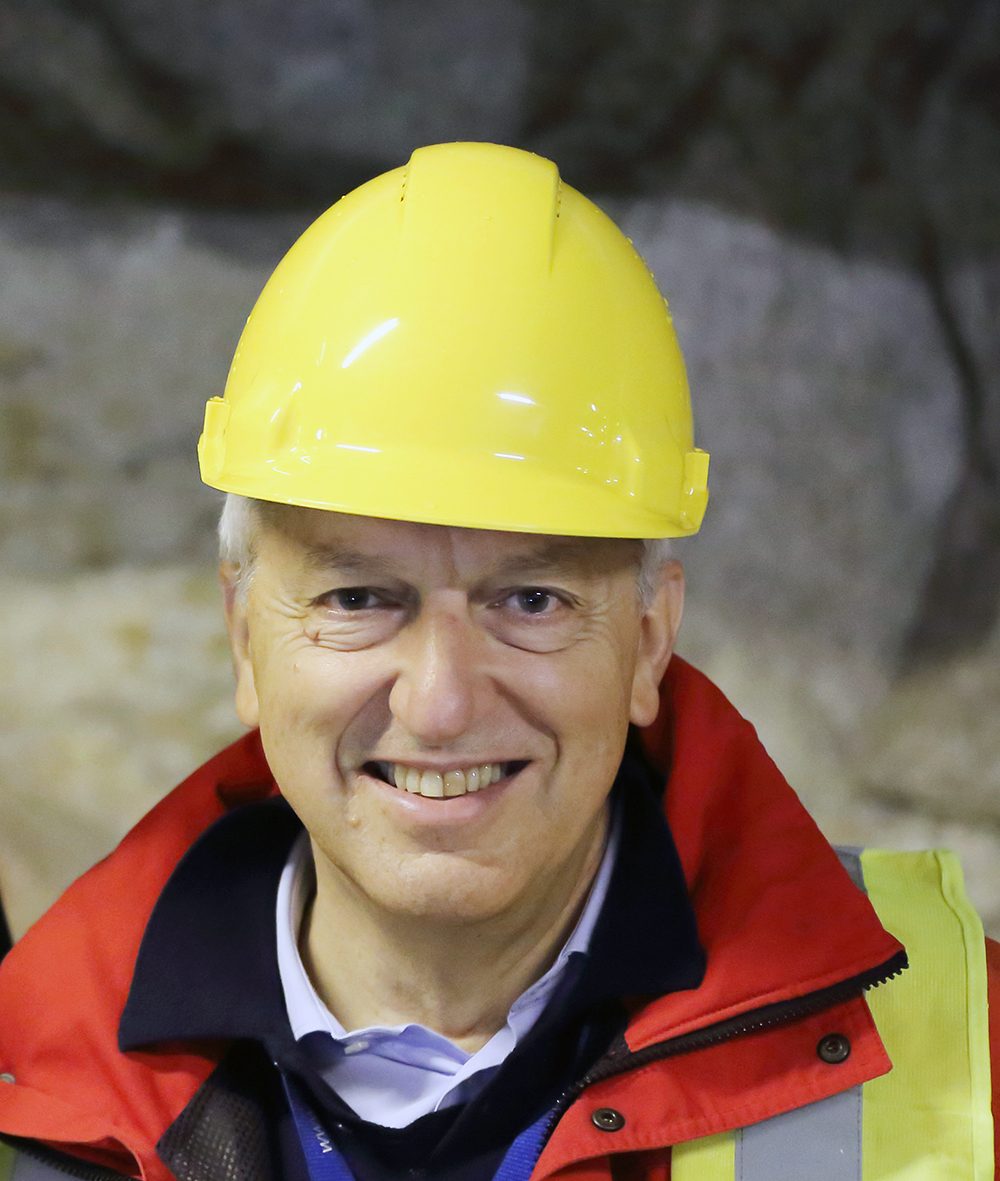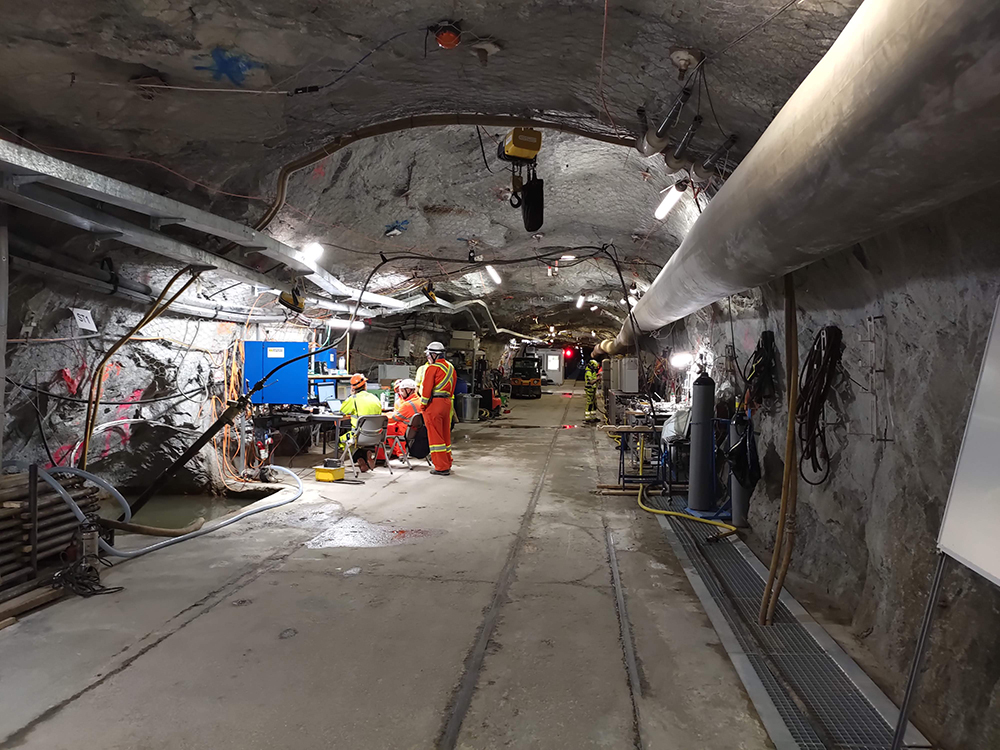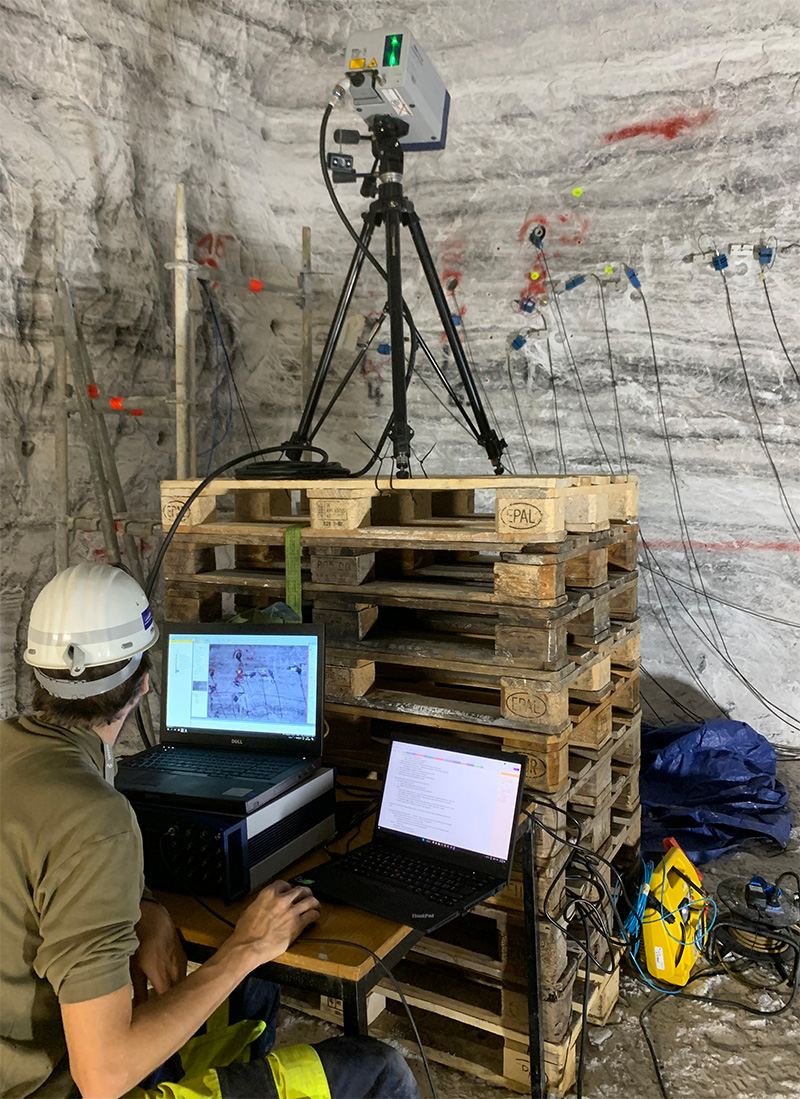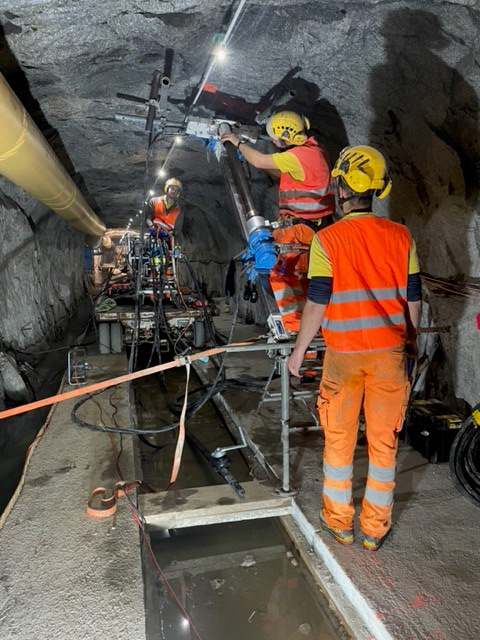2023-12-21
Construction diary: second niche completed
The second niche, designed to frame the entrance of the new side tunnel, has been successfully finished just before the holiday break. Measuring 40 meters in length and 3 meters in width, its completion marks a significant milestone in the construction progress.
Following the holiday break in January, the upcoming phase will involve drilling several monitoring boreholes for the PRECODE project. PRECODE aims to explore the rock mass's response to various excavation techniques by comparing conventional methods to low-impact operations. To achieve this, monitoring of the rock mass surrounding the initial 15 meters of the new side tunnel will occur before, during, and after excavation.
2023-10-30
Construction diary: first niche finished
A first step in the construction of the new side tunnel has been made: A first niche located in the main tunnel has recently been finished. It will be used for maneuvering vehicles and storing equipment that is needed for further construction and excavation activities.
It has been excavated by drilling and blasting and is 10 meters long and 3 meters wide. After a short excavation phase of three weeks, the floor was paved, and the ceiling was completed with a metal mesh to ensure safe operation in the new workspace. The construction now moves on to the next phase further down the main tunnel which will be the excavation of another niche. This niche will surround the entrance of the new side tunnel for which the excavation will start in 2024.
In parallel, the preparations for the PRECODE projects are running: They will focus on investigating the response of the rock mass to different excavation techniques comparing conventional to low impact operations. For this purpose, the rock mass surrounding the first 15 meters of the new side tunnel will be monitored before, during and after excavating.
2023-09-13
Luca Dal Zilio awarded the Jason Morgan Early Career Award
Congratulations to our team member and senior researcher Luca Dal Zilio for being awarded the Jason Morgan Early Career Award by the American Geophysical Union (AGU). Luca's principal research interests include the development and use of physics-based computational simulations to characterize and understand earthquake physics, fault mechanics, mechanics of porous media, lithospheric deformation and seismicity, and surface evolution.
At the BedrettoLab, Luca has been focused on advancing the frontiers of our understanding of earthquake source processes. His group is responsible for developing physics-based modeling tools that simulate fault slip, fluid-flow, and poroelastic effects in a highly integrated manner. Within the context of the FEAR project, these models are employed to simulate fluid injection experiments conducted at the BedrettoLab. Luca's work aims to gain invaluable insights into how earthquakes start and stop.
Specifically, Luca's models shed light on the complex interactions between hydraulic stimulation and stress modification, allowing us to understand how small, non-damaging earthquakes—measured at approximately magnitude ~1.0 events on fault patches of 10-50m scale—can be initiated in the vicinity of the Bedretto tunnel. These numerical experiments will provide new near-field perspectives into the physics of earthquake processes, significantly contributing to our efforts to extend the boundaries of current earthquake predictability.
2023-09-06
Construction start for a new side-tunnel of the Bedretto tunnel
This week marks a new chapter for the BedrettoLab, as we start the construction of a 125m long new side tunnel. Situated about 400 meters behind the geothermal testbed (TM 2000 - 2100), this side tunnel is a crucial part of the Fault Activation and Earthquake Rupture (FEAR) project.
The research conducted in the tunnel will primarily focus on earthquake physics, benefiting from its close proximity to a natural fault zone. With the new side tunnel, ETH Zurich will maintain a worldwide unique research facility for earthquake research.
After about three months, the construction will be interrupted for an engineering research project (Precode), which focusses on how the surrounding rock mass responds to the tunneling itself. The expected completion date for the tunnel is January 2025.
The construction cost of 2.5 million CHF is covered by the FEAR EU Synergy Grant. The tunnel excavation is carried out by ARGE Consorzio Cristallina (Ennio Ferrari SA and Infra Tunnel SA).
2023-09-05
Final stimulation in this series today
Today another small stimulation is taking place which will be the last stimulation of this series that started in July. The same procedure from the previous two stimulations will be repeated to check if earlier results can be replicated and show to what end the reservoir is durable.
Again, the team will inject relatively small volumes of water in one intervall. From the experience of the previous stimulations in this intervall, only small seismic events are expected to happen. As always, the usual safety layers are deployed. If predefined safety thresholds in magnitude or vibration are reached, the injection is halted and bleed off initiated.
2023-08-14
Mangia e Cammina at the BedrettoLab
Yesterday, on August 13th, the BedrettoLab was part of the local event 'Mangia e Cammina'. About 1,200 visitors hiked through the Bedretto valley, ending their tour at the entrance of the Bedretto tunnel. There, the BedrettoLab team, supported by SUPSI students, organized various activities.
Visitors enjoyed a small rock exhibition explaining rock formation, tested their hammer strength using a seismic sensor, and explored a photo exhibition showcasing our laboratory work. A new highlight was guided tours operated with a trailer attached to the tunnel vehicle. Within three tours, the trailer accommodated around 12 hikers, providing them a view of the Bedretto tunnel and the BedrettoLab.
'Mangia e Cammina' once again offered an excellent opportunity to introduce the BedrettoLab to the public.
2023-08-10
Examining microphysical rock properties of the Rotondo granite
The main scientific work of the BedrettoLab research takes place in boreholes which usually undergo thorough investigations. With the different sensors in the boreholes of the BedrettoLab, the research team already has a deep knowledge of the rock volume on a macroscopic level. Recently, experiments in the Rock Physics and Mechanics Laboratory (RPMLab) at ETH Zurich took place to learn more about the behaviour of the Rotondo granite on a microscopic level.
Dr. Claudio Madonna explains the work of the RPMLab: “Imagine the RPMLab as a scientific playground where rocks take center stage. In a similar manner to architects testing various materials to construct sturdy and secure structures, we investigate rocks to understand their strength and behavior. It's like experimenting with building blocks, yet instead of constructing towers, our endeavor revolves around discovering how rocks endure and withstand pressure. Through the meticulous study of rocks in our laboratory, we have the opportunity to unravel the secrets of geological processes, such as the formation of mountains and the storage mechanisms of underground resources. Our goal is to explore the fascinating world of rocks to unlock the scientific secrets and stories that lie within them.”
In an experiment, scientist Dr. Paul Selvadurai took a 10 cm long core that had been taken from a borehole in the BedrettoLab. With the special equipment called LabQuake at the RPMLab, it is possible to put a rock cylinder under pressures of 170 MPa that can even make it break. In this experiment, only an amount of 10 to 15 MPa was used which corresponds to the pressure of putting 10,000 to 15,000 tonnes of weight on one square meter. The cylinder was equipped with 16 sensors that can send and receive ultrasonic wave signals. Then it was put into a closed capsule which was clamped into a press. This press is capable of applying pressure to the rock in distinct directions, accurately simulating the stress conditions found in nature. While the different pressure levels were put on the rock cylinder, the wave signals were sent through it.
It is already known, that seismic signals travel through rock anisotropically, meaning that their travelling directions may change depending on stress, density and the existence of small microcracks within the rock. To gain a comprehensive understanding of natural rock systems, scientists must analyze both macro-scaled physics using data obtained from boreholes and micro-scaled data from experiments conducted at RPMLab. Borehole data provides valuable insights into the behavior of rock formations on a larger scale, offering information on factors such as stress, density, and the presence of microcracks. Simultaneously, micro-scaled data from RPMLab experiments allows researchers to investigate the intricate details of anisotropic wave propagation and its correlation with stress conditions. By combining these two sources of information, scientists can obtain a holistic understanding of how seismic waves interact with the rock matrix, enabling a deeper comprehension of the seismic behavior exhibited by granitic geothermal reservoirs.
2023-08-03
Small-scale stimulations investigating Geobiology
A research team led by Cara Magnabosco, professor in Geobiology, is conducting an experiment today to investigate the effect that hydraulic stimulation has on microorganisms inhabiting the Bedretto reservoir. The team will inject relatively small volumes of water (33 liters per minute) into one interval, closely monitoring the process. Special attention will be paid to how bacteria respond to water flow, pressure and induced seismicity.
Safety is a top priority, and the team follows a well-established protocol. If predefined safety thresholds in magnitude or vibration are reached, the injection is halted, and bleed off is initiated. The BedrettoLab team has significant experience in conducting such stimulations, making them well-prepared for this study.
Similar stimulations with geobiological focus will be repeated in one week. Overall, this research has the potential to provide valuable insights into the impact that hydraulic stimulation has on microorganisms in the reservoir.
2023-08-02
Kai Bröker awarded the best paper award at the ARMA Symposium in Atlanta
Kai Bröker, PhD student of the BedrettoLab, was recently awarded with the best paper award at the 57th Symposium of the American Rock Mechanics Association Symposium in Atlanta for the paper “Hydro-geomechanical observations during multistage hydraulic stimulation at the Bedretto Underground Laboratory, Switzerland”. Only 6 out of 600 submitted papers are honoured with this award.
We congratulate Kai and the team members who contributed to the paper for winning this award!
2023-07-24
Activity & Science Report 2023 available now
You can now download two reports summarizing all scientific activities between July 2022 and June 2023 conducted by our team in the BedrettoLab.
The Activity Report presents a comprehensive overview of the diverse range of activities carried out by our team, including students, researchers, technicians, and administrative staff members.
Additionally, the Science Report features all posters presented at conferences and meetings during the same period.
Download the documents here:
2023-07-17
ETH Board visits the BedrettoLab
As part of their yearly retreat, the ETH Board visited the BedrettoLab last week. 22 members toured the Bedretto tunnel to get in touch with ETH’s unique underground laboratory. The visit offered an excellent opportunity to witness firsthand the cutting-edge research infrastructure and the possibilites it presents.
2023-07-12
Small-scale stimulations starting today
After a series of longer stimulation phases in spring, the BedrettoLab team is starting with two additional stimulations today.
First, the same procedure from the previous stimulation will be repeated to check if earlier results can be replicated and show to what end the reservoir is durable. The team will inject relatively small volumes of water in one intervall. In a subsequent repletion of the same injection protocol the process will be particularly densely monitored with active seismic measurements in addition to the regular passive seismic monitoring.
From the experience of the previous stimulations in this intervall, only small seismic events are expected to happen. As always, the usual safety layers are deployed. If predefined safety thresholds in magnitude or vibration are reached, the injection is halted and bleed off initiated.
2023-07-05
Tunnel road expansion completed
The construction work for the tunnel road expansion has been completed recently. It kept the operations team busy the last 1.5 years. As planned, the road was at first paved up to 3,300 m. For safety reasons, it was then decided to extend the two-lane road through the entire tunnel which is 5,250 meters long.
The paved road now leads to the ventilation center at the connection with the Furka tunnel. This section was also equipped with LED lighting to provide a safer second exit from the tunnel. A redundant internet connection was installed during this extension in collaboration with Matterhorn Gotthard Railway. During the construction phase, a second and third cavern were paved also to improve logistics in the tunnel.
The entire tunnel extension was funded by the Werner Siemens Foundation.
2023-06-05
BedrettoLab Open Days
Last weekend, more than 200 visitors came to Bedretto and toured the BedrettoLab.
On Friday, 2 June, collaborators of the Earth Science Department of ETH Zurich were invited to see what the BedrettoLab team has built over the last few years. In each of the five tours, three members of the BedrettoLab team guided around 20 visitors through the tunnel, 2.5 km to the BedrettoLab and back. This event was an excellent opportunity to not only show the infrastructure and provide insights into current research projects but also to foster the research network within the Earth Science Department community.
The next day, the BedrettoLab opened its doors to the public. Around 100 interested people signed up for the six guided tours to explore the BedrettoLab. With the long Covid related break that made public tours impossible, this event marked a milestone to present the lab to the public and show what has been set up since the inauguration of the BedrettoLab in 2019.
2023-05-02
Join the BedrettoLab Open House on June 3
We are delighted to invite you to visit our laboratory on Saturday, 3 June. The BedrettoLab has now been in operation for four years and has become a unique underground laboratory run by ETH Zurich. It offers a wide range of possibilities for research in the fields of earthquake physics, geothermal energy and geobiology. In addition to the state-of-the-art research infrastructures of our laboratory, the Bedretto tunnel offers an exciting chance to walk through the deep geology of the Alps.
During the guided tour, you will walk about 5 km from the portal to our laboratory space and back. The tour also includes a safety briefing. For organisational reasons, it is necessary to register here. You will be able to choose between different time slots. The tickets are free of charge. We are looking forward to seeing you on June 3 in Bedretto.
The BedrettoLab team
More information
2023-04-26
Researching the geological evolution of the Rotondo massif
Alberto Ceccato is a structural geologist and investigates geological phenomena such as earthquakes and faults. With a variety of research methods, he is aiming to find out more about the geological processes and mechanisms that controlled the development of those faults through time. This knowledge helps other researchers of the BedrettoLab like geophysicists or engineering geologists to better understand the geological characteristics of the faults they are interfering with. Usually Alberto’s research journey starts with a field trip where he gets a very close look at the rocks. Last summer, he spent around one month in the Rotondo massif telling us now about his research adventure and his findings.
In June 2022, I started with field work for my research on the Rotondo massif. My aim was to find out more about the faults that we are dealing with in the BedrettoLab, about their age, their quantity and their main characteristics with regards to their mineralogy, length, and orientation. The typical tools of a structural geologist during its fieldwork are a compass, a notebook, a tablet, a hand lens and a camera. As I entered quite difficult terrain, I also always had a GPS-tracker with me.
Field observations
On the notebook, I wrote down any interesting detail that I observed regarding the geological characteristics of the Rotondo massif: the contents of minerals of the rocks, their size and distribution in space, the distributions of the structures and fractures in the massif, etc. The structures that I am most interested in are faults. For a structural geologist, a fault is not just a plain of two rock volumes touching each other. It is a large volume of rock that had been crushed and transformed by strong mechanical forces, sometimes associated with earthquakes, and developed in geological ages which means several millions of years. The final result of these processes, what we actually see in the field, is the formation of fault rocks, so called gouges and cataclasites: fine grained rocks made of quartz, micas, and clay minerals born from past earthquakes and rock deformations along faults. Most of the time, these fine-grained rocks are eroded easily, and they usually form valleys and gullies into which water infiltrates. However, hiking around the Rotondo massif I have found several well-preserved outcrops where it is still possible to see and study in detail such faults and fault rocks.
On the tablet that I also carried with me, I used a dedicated GIS (geographic information system) software where I mapped the faults that I could recognize on the field. By adding my observational data into a digital map, I got an overview of the whole area and how the different faults are distributed. Additionally, precise drone pictures from the area helped to get detailed images of the area that I am looking at which is around 8 km2 large. Altogether, the data collected from my field work consists of hand notes, digital mappings, photos, drone images and lastly rock samples.
Looking back 295 million years
After about 30 days spending in the mountains, I returned to my office at ETH Zurich to start with analytical work on my computer and in our laboratory. With a certain grinding method, our laboratory technician created a very thin layer of rock that makes it possible to be analysed under the microscope. This allowed me to learn more about the micro-structure and geochemical composition which are indicators for the geological process generating the fault rocks at the age of the fault. With the combination of the large-scale methods in the field and the microscopic scale research methods, I was able to draw the story of the Rotondo massif back from the origins up until today.
It is quite long and troubled, starting at around 295 millions of years ago, when the Rotondo granite solidified from hot magmas deep in the Earth’s crust. Plate tectonic forces acting during the formation of the Alps squeezed and crashed the Rotondo granite, leading to the development of a sequence of different sets of faults and fractures. Each of these sets is characterized by different minerals, chemical compositions and fault orientations, suggesting that each set formed at different depth and temperature conditions through the geological history. Some of these faults and fractures likely generated during earthquakes, and thus further analysed will help us to understand the geological characteristics which might control earthquake generation in the Rotondo granite. 26 April 2023
This text was published in the latest issue of the "Gazzettino di Bedretto" (in Italian).
2023-04-06
“We begin to understand how faults move under the Alps”
Professor Domenico Giardini led a group of enthusiasts that had the idea to establish a unique, large-scale rock laboratory in Switzerland. With the BedrettoLab in operation since 2019, this idea became reality. Giardini chairs the Board of Directors of the BedrettoLab and is therewith closely involved in taking decisions about current and future developments. We asked him about the development of the lab, his personal highlights while working for the BedrettoLab and about his visions for the future.
Where did the idea of creating a rock laboratory come from?
In the past, the unwanted consequences such as felt or damaging earthquakes at large scale geothermal projects showed that we need to understand better what happens deep underground if we inject water or extract hot or cold water. The difficulty is, that geothermal reservoirs with temperatures of at least 180°, required for the generation of electricity, are necessarily 4-6 kilometres deep underground in non-volcanic regions like Switzerland. Normally we only know little about the deep underground and are forced to conduct most measurements from the surface. So, we knew, if we want to exploit geothermal energy in the future in Switzerland, we need to have a better understanding of the processes in the deep underground. There are already two underground laboratories in Switzerland (MontTerri and Grimsel). The experiments that we conducted for two years in Grimsel allowed us to work at a depth of a few hundred meters and a scale of a few tenths of meters. But we were looking for larger rock volumes and depths of 1-2km, and consequently we needed to find a suitable place with appropriate conditions.
How did the selection process for the BedrettoLab work?
There are a number of existing tunnels in Switzerland that were well known to the geological community. When we wanted to start this new underground lab, we consulted with our geologists to choose a suitable tunnel. In the end, we had a selection of three possible tunnels and chose the Bedretto tunnel for several reasons: First of all, the geology per se was a key criterion. The granite that we have here is representative for the basement geology in Switzerland and the fact that the tunnel is not cemented over a length of over 5 kilometers is incredibly helpful for our experiments. We can “read” the history of the tunnel from the tunnel walls and most of all we can see the faults. A second favourable aspect of the Bedretto tunnel are logistics, which also include safety aspects. The two exits, one in direction of the Bedretto valley and the other to the Furka tunnel, guarantee the accessibility in an emergency. Also, you can reach the tunnel easily with public transport or by car. Those are the most important scientific and practical advantages. And in the end, having the Matterhorn Gotthard railway company (MGB) as an owner, who is managing the infrastructure and has an interest in maintaining the tunnel turned out to be extremely helpful. They became a valuable partner as the MGB is always very constructive in supporting.
What has been your personal highlight since the BedrettoLab has been established?
Overall, I am overwhelmed by the enthusiasm that people bring to this project! It’s not a given that people spend days and nights working in a tunnel deep under the Alps. And we are talking about a large group of people: now our team consists of around 40 people. The work in the tunnel has of course an adventurous component. And a big incentive is that they are working at the frontier of knowledge. Everything that we now have installed didn’t come off the shelf, but we needed to develop customised solutions. This is certainly motivating. I can see it every day that the whole team is giving the maximum. And for me, this enthusiasm is the most rewarding aspect in this whole operation.
And what was the biggest challenge?
The operation is larger than we had foreseen. The contractual part turned out to be very challenging, with many contracts, projects and orders. The larger orders have to be approved by the ETH legal team to comply with applicable regulations, and in the end by the Board of ETH. In general, this means that the whole administrative process gets more comprehensive and complicated. Work underground is really expensive and we need to secure the funding for all our operations as well as for running a functional and safe underground laboratory. It is sometimes difficult to make the value of certain interventions visible; for example, a 400-meter-long borehole full of cemented sensors does not look like much from the tunnel wall, but it’s a very sophisticated and expensive research facility. After all, the administration is confronted with new topics and so are we. Finally, to have an extra level of internal monitoring and supervision, we have an Oversight Committee consisting of persons from the administration and from research. And they advise us with larger strategic decisions. Overall, operating an underground lab of this scale is very interesting in terms of the science that we can do here, but is challenging.
What are the main findings with regards to the mitigation of induced earthquakes in the context of operations targeting the deep underground?
We have many firsts. For example, we demonstrated for the first time that you can install and engineer a reservoir in different stages, and we could demonstrate that you can steer, monitor and model separately each stage. With this new method you minimize the seismicity and control where the water goes. This had never been done before. At first, we explored this within the DESTRESS project and then later we tested and developed it further in the VALTER project. For Geo Energie Suisse (GES) it was a key to get permission to go ahead with the geothermal project in Haute-Sorne. Now we have gained lots of new data and scientific knowledge from that. And in parallel we learned many things about the geology and the fault system. Further, we gained insights about the behaviour of the whole mountain. This is totally new because we started to install instruments that measure seismic activities where they happen. We are beginning to understand how a mountain moves underneath with the data that we are collecting. We tend to think of a mountain as a pile of dead rock. This is not the case! It’s a living object.
The construction work for a new side tunnel will begin in early summer this year. This side tunnel is part of the earthquake research project called “FEAR”. Can you describe the purpose of this tunnel?
FEAR is the largest funding released to date in Earth Sciences by the ERC Synergy Grant program of the European Union, with the aim of studying the physics of fault activation and earthquake initiation. Following extensive investigations, we now know about the fault systems that we have in the tunnel and we know which ones are active. We identified a system of faults that intersect each other. And in order to be close to them we need a side tunnel that follows one fault on which we will induce a small earthquake and investigate intensively how the fault behaves before, during and after the quake. With a series of boreholes, we can monitor the fault and inject water from nearby. This wouldn’t be possible to do from the main tunnel.
To which questions would you like to find answers within the next five years? Is there a vision that you have for the BedrettoLab?
I’m a researcher at heart but I always try to get products or answers coming out of my research that serve our society – consequently I remain loyal to both parts. I am still fully convinced that if we have a better understanding of how a quake starts and stops and when an active fault is becoming critical, it would be a huge benefit for many sectors of society in terms of seismic risk mitigation. What signal is an active fault giving us? When is a quake about to start? When and why does it stop? These are all questions to which we want to find answers in the BedrettoLab. You're dealing with an object that can be a hundred kilometres long, if not a thousand kilometres long and the preparation phase can last centuries and, in the end, everything happens in a second. A better understanding of all these processes would be fundamental, as we have seen in the tragic Turkey-Syria earthquake sequence that happened in February. This and the research on the extraction and storage of geothermal energy remain the key disciplines of the BedrettoLab. But of course, we have researchers of other disciplines using the tunnel for their domain, for example the geobiologists now looking for forms of life surviving in the rock kilometres below the surface. After all, I will retire in a few years and I am happy to know that younger colleagues with new ideas continue research in the BedrettoLab.
2023-02-28
VALTER stimulations to continue this week
After a break filled with analyses and preparations, the BedrettoLab team is conducting a new series of stimulations in continuation of the VALTER project and in preparation of the FEAR project. The first stimulation is starting this week with relatively small volumes of water being injected during a few hours.
The main aim of these stimulations is to investigate stress preconditioning. More specifically, the behavior of individual fractures by increasing the fluid pressure will be tested. These investigations are an important prerequisite for the upcoming FEAR experiment. Later stimulations, to be conducted in March and April, will focus on the increase of transmissivity of the host rock which is essential for the generation of a geothermal reservoir.
As for all activities in the BedrettoLab, safety is the top priority, and this also applies to the upcoming stimulations. We have deployed several safety layers to ensure that the seismicity does not reach crictical levels. Since we closely monitor the stimulations with our exceptionally dense and highly sensitive measuring system, we can identify in near real-time changes within the rock volume of interest. This enables continuously updated hazard re-evaluations. If predefined safety thresholds in magnitude or vibration are reached, the injection is halted and bleed off initiated.
2023-02-14
Sensor calibration in a salt mine
A group of scientists of the BedrettoLab team recently conducted experiments in the Merkers salt mine in Germany with the aim of calibrating a variety of seismic sensors. Calibration of these sensors is required to infer quantitative physical measurements from the recorded ground motions originating from seismic activity at the BedrettoLab. The sensors will later be installed in boreholes for the FEAR project aiming to measure small magnitude earthquakes, so-called “pico-seismicity”, that range between magnitudes of Mw -6 to -2. Special about these small magnitude earthquakes is that they are usually not felt by humans and that they radiate high-frequency energy (i.e., 1 – 100 kHz), a frequency bandwidth that was targeted with the recent experiments. The results gained are allowing us to calibrate the installed sensors and physically quantify pico-seismic earthquakes.
The saltmine offered an ideal setting for in-situ calibration of these sensors as the salt rock has a simple homogenous structure and low attenuation. In general sensor calibration requires an ideal setting meaning that the measurements of specific physical values should work without disturbances. In granite, like the one in the BedrettoLab, the velocity of the waves travelling through the rock volume is disturbed due to fractures and faults which makes calibration very difficult.
For the calibration experiments a variety of sensors were installed around a salt pillar measuring approximately 40 m by 40 m. Different artificial sources were deployed, most informative being a steel ball pendulum were used to initiate seismic waves in the pillar. The recorded seismic waves at a sensor were then compared to a reference laser sensor as well as models that predict the seismic wave field, ultimately leading to the calibration.
The salt mine experiment (SaMiEx) benefited from multiple partners, most notably Gesellschaft für Materialprüfung und Geophysik (GMuG) and the German Research Centre for Geosciences (GFZ) but also the Institute of Mine Seismology (IMS), Kistler Instruments AG and Elsys Instruments AG.
2023-01-16
Drilling of additional FEAR boreholes started last week
The drilling campaign for additional FEAR boreholes started last week. In the next two weeks, eight boreholes with lengths of 9 to 12 meters each will be drilled. They are designed for the placement of highly sensitive acoustic emission sensors which will be part of the initial phase of the FEAR Integrated Monitoring System (FIMoS). The full FIMoS, which will be built in phases, will be a large array of multi-disciplinary sensors installed in boreholes drilled from the to-be-constructed FEAR side tunnel and near the target rupture planes. FIMoS is designed to monitor, record, and image faulting processes at very close distances with high precision. We expect to record more than 100’000 micro-earthquakes in the magnitude range -4 to 2 throughout the duration of the FEAR project.

